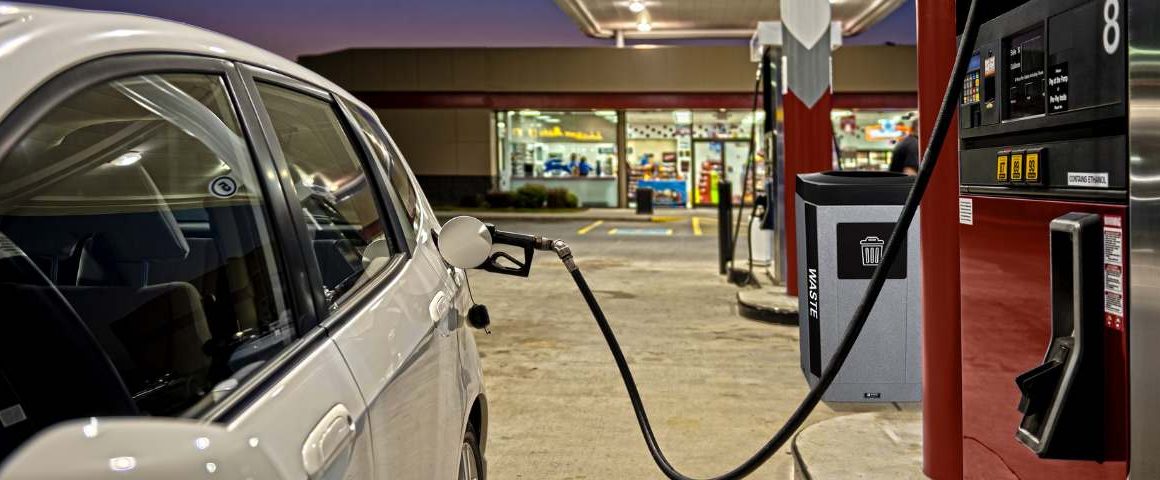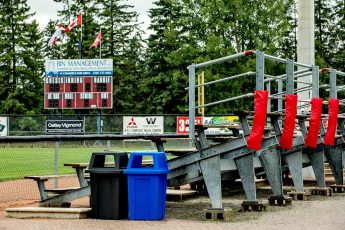Everyday day, gas stations are used by motorists to fill up their tank to help them get from point A to point B. As this is also typically a quick pit stop, recyclables & trash can be thrown out at gas stations with little thought as to proper waste sorting. And, the waste discarding process could vary based on whether or not the motorist plans to just stop at the forecourt to fill up their vehicle, or if they have to enter the service station for any other needs. With all this in mind, in order to determine the best practices for both exterior and interior waste collection at a gas station, there are some questions we need to consider…
For starters, let’s assume that we are looking at motorists who are entering the service station to either pay for their fuel, or to pick up something during their stop. What is typically sold inside of these service stations?
Each service station contains a wide range of grab-and-go items for one’s convenience. These items can range from cigarettes and coffee to chips and candy to bottles of water, pop, and juice. With the knowledge of what items might be of interest, you can then determine what bins will be needed. In most situations, a waste and recycling duo would work out for a service station, only worrying about an organics bin if these stations also provide fresh fruit. Also, be sure that these bins are close to the door for easy access for those coming in and going out to ensure the best use of these bins. When it comes to the presentation, we’ll touch on that in a moment, but first, we need to explore those who choose not to entire the service station –
Our next question we need to explore is how much time is spent at a gas station? As part of a study done by GEOTAB in the United States, they had found that, on average, patrons spend about 8 minutes at a gas station for every stop made. If we assume that those who spend as little time as possible are paying at the pump and staying within the forecourt, it would likely be on the lesser spectrum of this average as well. When considering exterior bins, you will want to determine the best placements as well. Considering that these individuals are staying within the forecourt, it’s best to have bins available either at each pump or in-between pumps; something visible and easily accessible with minimal foot travel.
Our third and final question that pertains to both within the service station and outside in the forecourt is how might you want your bins to be presented visually and/or aesthetically? Looking back at interior service station bins, it would be best to have restrictive openings – a square opening for waste, a small round circle for cans & bottles, a long, thinner slot for paper/cardboard – to help differentiate between different waste streams. As always, colour coordination would be important as well – keeping your bins the same colours that people are used to seeing elsewhere in your jurisdiction (often blue recycling, black trash, green organics, etc).
As for labels, showing visuals of what one may find within that service station would be key to ensuring the proper sorting is occurring when the bins are being used. For example, if you have a specific-looking bag of chips, ensuring a graphic/visual representation of that kind of chip bag is visible on the waste container can go a long way. When we’re looking at the exterior forecourt bins, larger openings would be important under the assumption that they’re being used for a multitude of items varying in sizes, and continuing along the trend of colour coordination would be an important aspect as well.
When it comes to the visuals, large images of what should be disposed in each bin is important, as people out in the forecourt are going to likely spend the least amount of time thinking about which waste items should go in which container. Keeping the signage very easy to see and simple to understand will assist in lowering the likelihood of waste contamination. And when planning which items should be shown on the labels, remember to include items unique to the forecourt area, such as a small bag of built-up trash from a vehicle, or empty washer fluid jugs.
Overall, when looking at optimizing the waste collection at gas stations, start from the place of understanding that they’re almost always a quick pit stop. From there, examining what bins fit best for your needs – large/restrictive openings, specific colours, signage capabilities, etc – will be of great help when it comes to your selection process. Be sure to monitor your intake as well, and make future adjustments as your waste collection needs can grow and change over time.
***
For a more in-depth analysis, you can review the following blog on improving recycling & waste management at retails stores here as retail and service stations do have some similarities: https://www.buschsystems.com/blog/blogs/7-tips-for-improving-recycling-and-waste-management-at-your-retail-store/













